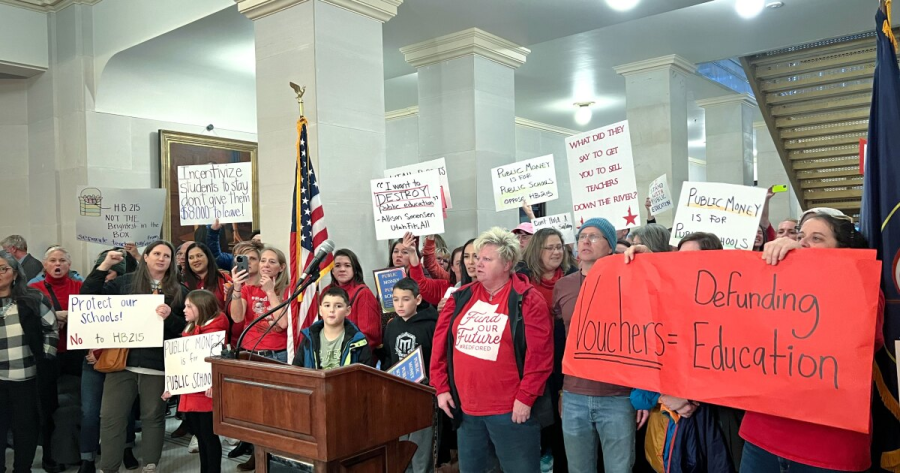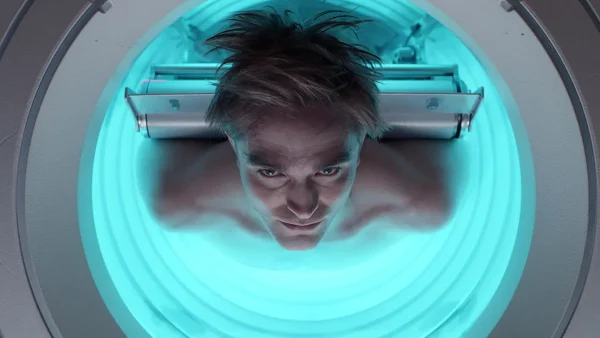HB-215 and the Student’s Choice that Wasn’t
On January 28th, 2023, Governor Cox signed HB-215 — a bill subsidizing $42 million from public education funding to provide scholarships for private schools and homeschooling. This budget — the largest one in Utah’s history — will subsequently reduce the state school funds already ranked as one of the lowest in the nation for its student spending. A monumental decision that will ultimately widen the gap between the quality of education offered at public and private schools.
A voucher program is a government certificate that empowers students to attend private schools through state allocated budget that would otherwise be used for a student to attend a public school. This bill will support the “Utah Fits All Scholarship.” It will enable 5,000 students to attend private schools or homeschools starting 2024.
Recently, privatizing education has become a trend among policymakers. They uphold the motto of “school choice” as a justification for vouchers. During Betsy DeVos’ term as the United States Secretary of Education, the movement towards expanding school choice through charter schools and vouchers grew in popularity.
While voucher programs appear, at first, to be benefiting students, it becomes evident quickly that they strip already underfunded public education. “I think it’s disheartening for those who already have little access to fundings for their future,” said Carter Emmerson, a student at Herriman High.
Public education — that supports a majority of students — requires a strong foundation to supply adequate resources to children. But, cutbacks in school funding undermine public schools. Instead of improving public schools, voucher programs provide an alternative that is not necessarily beneficial to students. With a $42 million budget, this scholarship is still only enough to support 5,000 students. Though these scholarships will go to low-income students, that is still a small percentage compared to the 675,000 students enrolled in public schools.
And, academic performance between public school students and voucher students illustrates the downsides of such programs. Numerous studies show that on average, voucher students tend to perform significantly lower or the same as public school and non-voucher private school students. Many proponents of voucher programs are quick to cite the long-term impact of vouchers as a reason to expand their funding. But recent studies reveal that vouchers are not statistically significant for a students’ likelihood of completing college.
Moreover, voucher programs find their beginnings within the segregated roots of the American education system. The earliest version of voucher programs was established in southern states following the SCOTUS decision on Brown v. Board of Education (a decision that overturned racial segregation in schools). Southern states offered “tuition grants” programs to white students to send them to segregated private schools. Though studies such as those done by CATO reveal that several members of the BIPOC community are supportive of these programs, stating that vouchers are beneficial to POC or low-income communities oversimplifies the matters.
Most POC communities are concentrated near high-poverty areas that were predisposed to underfunded education systems because of racist practices such as redlining, housing discrimination, and filtering. Having so much of the BIPOC community concentrated near inadequate educational facilities will consequently turn them away from public schooling. However, even with voucher programs most private schools are unaffordable. For example, the current voucher program in Utah only gives $4000 to a student. Comparatively, a private school costs $11,018 per year on average in Utah. So, even though vouchers can empower BIPOC students — in practice, these programs support a small group while simultaneously draining essential funds from public schools that will likely support a higher percentage of POC students. In fact, 60% of students on voucher programs are white.
Not to mention, these matters are further complicated by the use of voucher programs to fund scholarships in religiously-affiliated schools. Religious schools have often alienated POC groups, with several Christian schools built in the south following the Brown v. Board of Education to counteract the integration. The 2020 SCOTUS ruling on Espinoza v. Montana Department of Revenue deemed it unconstitutional to withhold state scholarships to religious schools for students. All of this together reveal the racial implications of bills such as HB-215.
“It is very sad to hear that our state government values private schools over the basic necessities of public school students,” said Madi Hoang, another student at Herriman High.
Policies such as HB-215 distort our perception of public schooling. They reframe public education as the root of inequality rather than the state government that refuses to sustain equal access to quality learning. Privatizing education does not improve social and economic disparities, but a stable educational environment that accepts students unconditionally will. Public education is an investment, not a diversion from our goal toward an equitable future.








